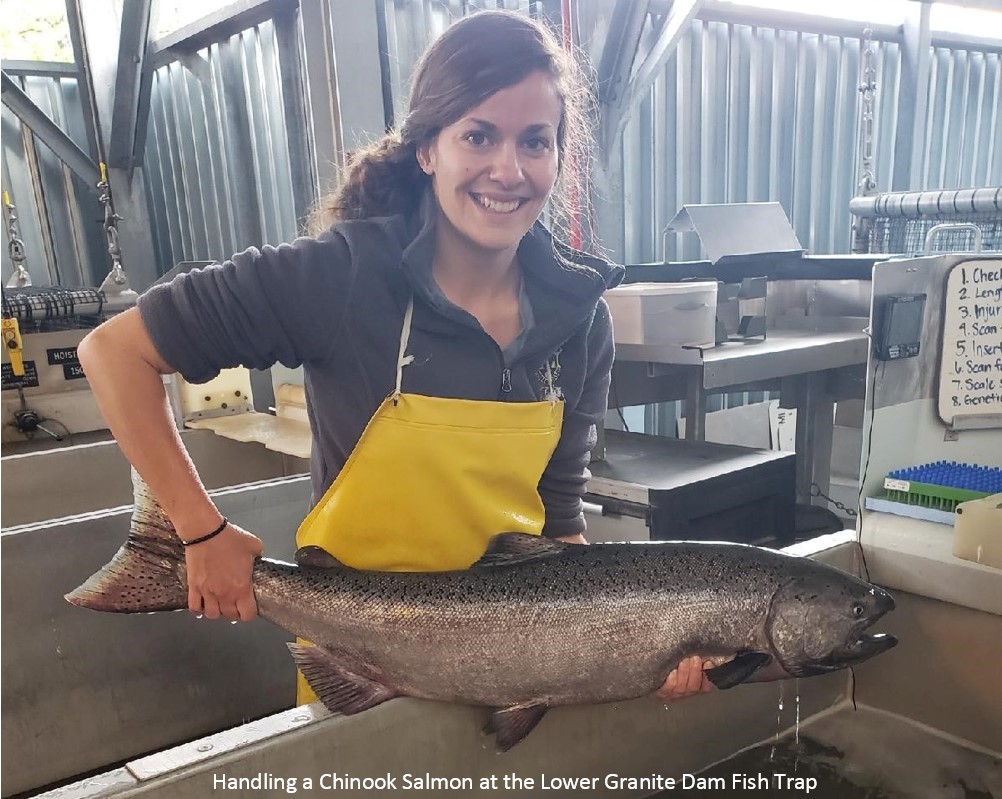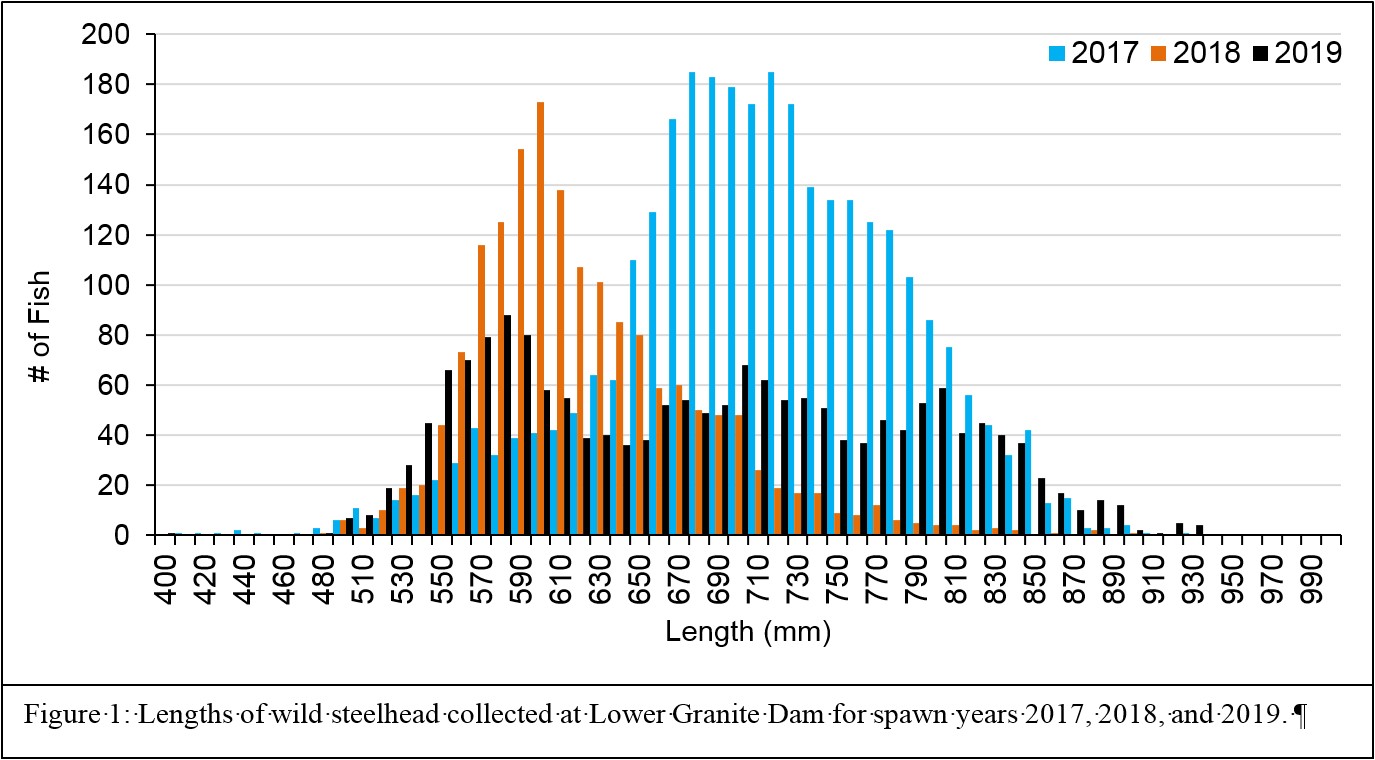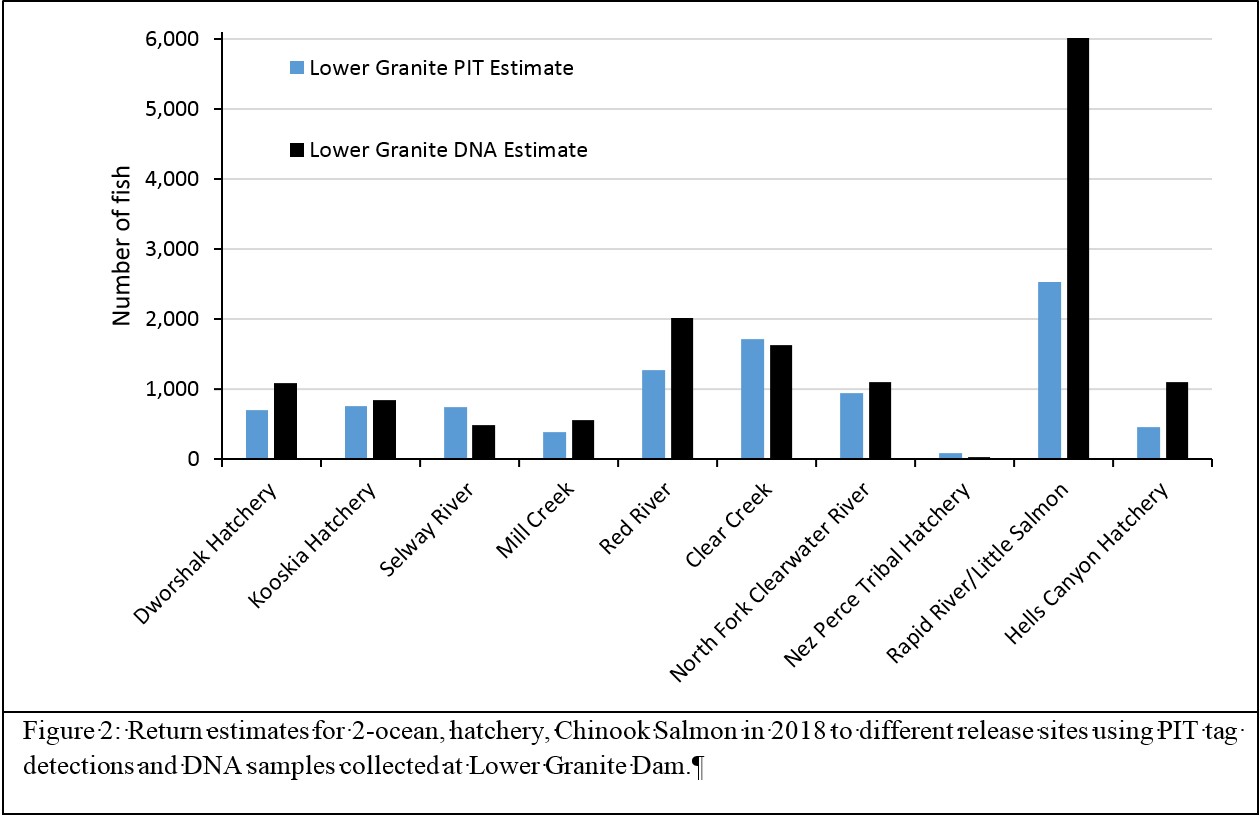Lower Granite Dam Fisheries Research
Idaho Department of Fish and Game
By Dalton D. Lebeda, IDFG/PSMFC Senior Fisheries Technician
Hi Everyone,
If you have ever wondered what the Idaho Department of Fish and Game (IDFG) is doing at Lower Granite Dam, then this article is for you! Lower Granite Dam is the last of the Dams on the Snake River before you get to Idaho. To make it to Lower Granite Dam, salmon and steelhead must swim nearly 400 miles from the mouth of the Columbia River. After reaching Lower Granite Dam, these fish must swim up a fish ladder and migrate an additional 32 river miles before making it to Idaho at the confluence of the Clearwater River and Snake River.

The IDFG’s involvement at Lower Granite Dam is an ongoing collaborative research effort that includes federal, state, tribal, and private agencies and organizations. Lower Granite Dam is unique because it has two fish trapping facilities, the adult trap (operated by the National Oceanic and Atmospheric Administration), and the juvenile fish facility (operated by the US Army Corps of Engineers). The IDFG has been sampling fish at the juvenile trap since 2010, and at the adult trap since 2008.

The Department’s involvement at Lower Granite Dam is paramount to successful management of anadromous fish populations in Idaho. Collaboration between all the parties occurs on a daily basis to assure vital biological information from juvenile and adult anadromous fish is collected. In 2017, the IDFG helped collect data from nearly 40,000 fish at the adult trap. In 2018, to date (Oct 26), biological information has been collected from over 29,000 adult fish. The information collected from each fish is dependent on species, run, and physical condition. Types of biological information collected from fish include fork lengths, presence/absence of the adipose clip, scales, physical condition (e.g. injuries and diseases), presence/absence of tags (e.g. coded wire tags, PIT tags, Floy tags), and DNA samples. Additionally, PIT tags (passive integrated transponder tags) are administered to every wild fish handled, and radio telemetry tags are administered on a project by project basis.
With the data collected at Lower Granite Dam, we can learn a lot about salmon and steelhead migrating to Idaho including: how old they are, what size they are, where they came from, where they are headed, how well they are surviving, when they migrate, and more. For example, length data collected at Lower Granite Dam shows how the size of wild steelhead can vary considerably from one year to the next (Figure 1). The low abundance of small fish in spawn year 2017 followed by a low abundance of large fish in 2018 is evidence of the poor survival wild steelhead faced as they entered the ocean as smolts in the spring of 2015. This year’s steelhead run (spawn year 2019) is showing what we call a trimodal length distribution, likely representing steelhead with different run timings and different ages.

Data collected at Lower Granite Dam is also being used by managers to make decision during fishing seasons. A great example of this occurred during this year’s (2018) and last year’s (2017) spring Chinook Salmon seasons. Throughout both fishing seasons, DNA samples were collected at the dam and were analyzed in-season at the Eagle Genetics Lab in Idaho (Figure 2). Results from the DNA analysis gave fisheries managers more accurate information than provided by PIT tags on the size of the runs returning to different hatcheries. Using this information, managers adjusted harvest quotas for spring Chinook Salmon during the season (Figure 2). In both cases, this data help provide more fishing opportunities for anglers.

Hopefully this article gives you a feel for all that we can learn from the information collected at the adult and juvenile fish traps at Lower Granite Dam. Because of this information, our understanding of Idaho’s salmon and steelhead populations has increased dramatically. This type of information allows us to make more informed decisions, which ultimately will lead to healthier anadromous fish populations and better fishing opportunities.

